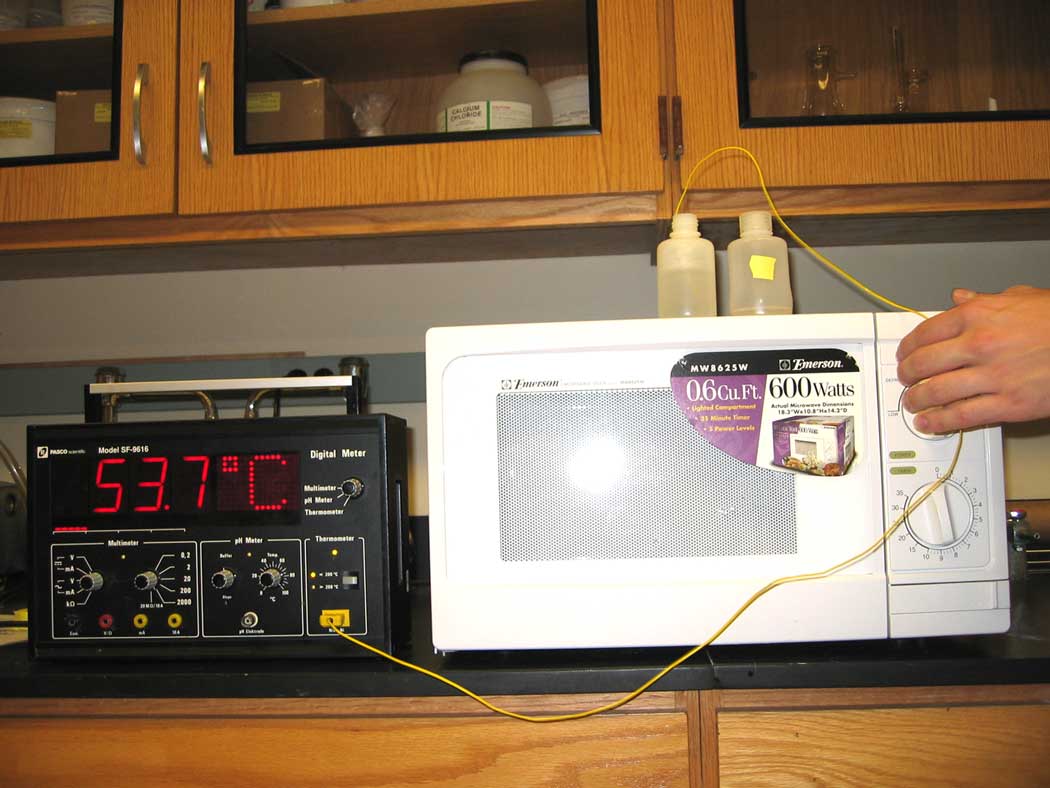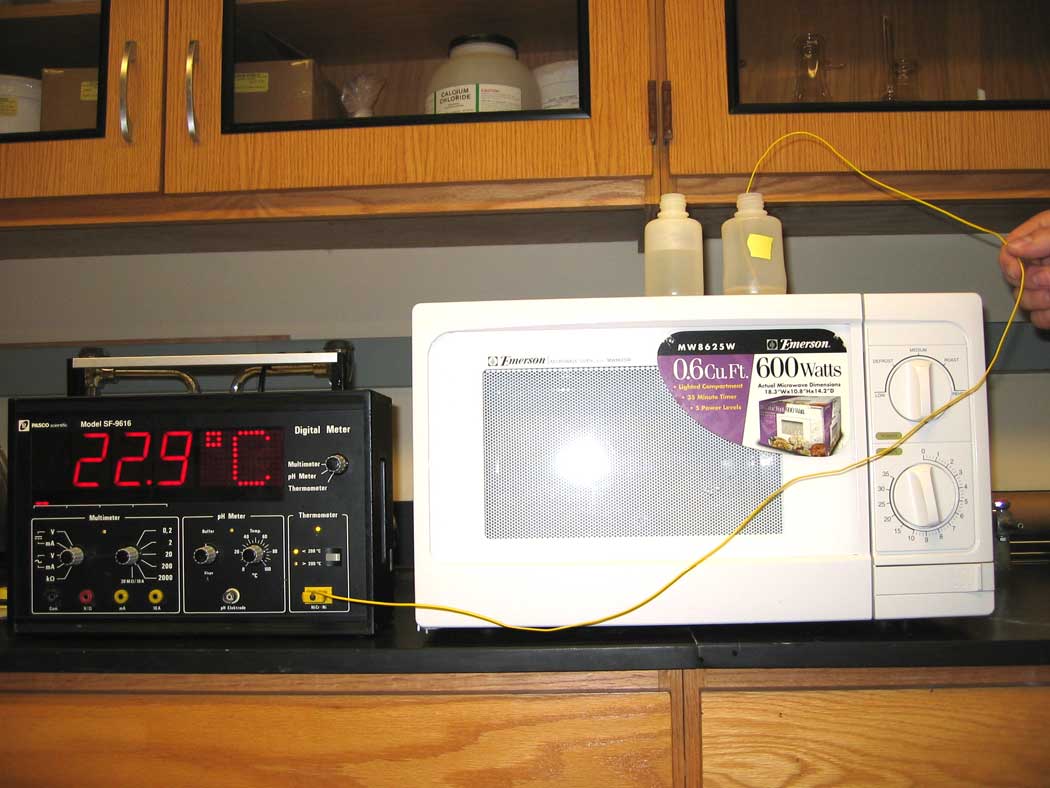Probing polarity with a microwave oven
 The great difference in polarity of two liquids - water and cyclohexane - is demonstrated using a microwave oven.
The great difference in polarity of two liquids - water and cyclohexane - is demonstrated using a microwave oven.
Ingredients: water, cyclohexane, microwave oven
Procedure: A complete recipe follows.
1. Place bottles with small quantities of water and cyclohexane in microwave oven. "Cook" for a bit.
2. Remove bottles and have objective observer test temperatures by hand.
3. Substantial differences in temperature are noted - the water is quite hot while the cyclohexane remains near room temperature - which can be checked quantitatively with a thermometer.
Understanding: Through our common experience, we grow up knowing that "oil and water don't mix." When we think of "oil," we can think of hydrocarbon chains like hexane, C6H14, and octane, C8H18. We can also think of hydrocarbon rings like benzene, C6H6, and cyclohexane, C6H12. When we think of "water," we think of ... water, H2O.
The differences observed in the behavior of hydrocarbons and water can be understood using the concept of electronegativity. We think of alkali metals being very electropositive, holding their outermost valence electron loosely. So loosely they often give it up. The most electropositive end of the Periodic Table is found near cesium. We think of halogens as being very electronegative, holding their outermost valence electrons tightly. And they want more. The most electronegative corner of the Periodic Table is found near fluorine.
 In cyclohexane, the difference in the electronegativity of the hydrogen and the carbon is not great. As such, in the "battle for electrons" waged by the atoms, it is a "draw." The carbon and hydrogen atoms enter the relationship neutral, and remain relatively neutral after forming covalent bonds that define the structure of the cyclohexane molecule. That makes cyclohexane nonpolar.
In cyclohexane, the difference in the electronegativity of the hydrogen and the carbon is not great. As such, in the "battle for electrons" waged by the atoms, it is a "draw." The carbon and hydrogen atoms enter the relationship neutral, and remain relatively neutral after forming covalent bonds that define the structure of the cyclohexane molecule. That makes cyclohexane nonpolar.
In water, the difference in electronegativity of the hydrogen and oxygen is great. Oxygen is able to draw the electrons in the covalent bonds away from the hydrogen nuclei. As a result, the oxygen-hydrogen bonds have a polar character, with the oxygen end being negatively charged and the hydrogen end being positively charged. Overall, the bent water molecule has a substantial dipolar character, and water is a very polar liquid.
The electromagnetic waves of a microwave oven interact strongly with molecules with dipoles. The energy in the electromagnetic microwaves can be absorbed by polar molecules, making them move more vigorously and increasing the temperature of the liquid. In our experiment, the polar water is heated substantially, while the nonpolar cyclohexane is left relatively uneffected - a dramatic demonstration of the great difference in polarity of the two liquids.
The structure of cyclohexane
Question: Draw a good Lewis structure for cyclohexane. You should find that all atoms have filled valence shells, and that the formal charge on every atom is zero.The cyclohexane molecule is known to have a few relatively unstrained molecular structures. One is known as the "chair" and another the "twist boat." Using your knowledge of molecular structure (and your molecular model kit), identify those structures.
Useful information: Use C12H26 as the
chemical formula for crude oil and 1.00 g/mL as its density, and assume
that the earth is 75% covered with ocean, with an average depth of 1
mile.
Don't cry over spilled oil (problems)
Question: In 1993, an oil tanker (the "Braer") wrecked off the
Shetland Islands (Scotland) and lost almost all of its 25 million gallons
of crude oil. Let's assume the oil has dispersed uniformly through all
the oceans of the earth. (The solubility of oil in water is small,
but not negligible.) How many molecules of oil from this spill would you
expect to find in a cup of ocean water (volume = 300 mL) taken from
anywhere in any ocean of the earth?